Finally after months of planning, filming, editing and stressing out about it, here is our opening sequence to the feature film 'Femme Fatale':
Femme Fatale
Thursday, 31 March 2011
Wednesday, 30 March 2011
Q7. Looking back at your preliminary task, what do you feel you have learnt in the progression from it to the full product?
Filming our preliminary task really helped us develop our main task into something which we are all proud of. Our preliminary task of filming a continuity exercise made us realise that filming is actually really difficult, there’s so much to think about. For example the framing as in is the subject central or more to the left and shot distance as well was tricky because you don’t want them all the same distance or angle because that’s monotonous and boring for the audience, they want variation. Also bringing in props proved a challenge to us as a group because we didn’t sort it out before hand and then some of us forgot to bring in a pair an envelope of paper as fake money and we just used whatever we had with us just before we filmed. This taught us the valuable lesson of preparation and organisation!
The continuity task helped us to realise how much work goes into filming a simple forty five second sequence. We constantly had to think about camera angles and distances and whether there was anything in the shot that shouldn't be, for example in one of our shots there's a camera which shouldn't be seen. This made us develop the skill of checking every time before we started to film and it also improved our multi tasking skills because we were always thinking of something else like angles whilst filming or checking the lighting
I personally think that our group worked effectively as a team and that sometimes there were times of mis communication but on the whole we communicated and helped each other out with resources and ideas for our blogs. Our preliminary task helped us to trust each other with this media project because we were all in it together and we were all just as scared as each other about using the cameras and tripods.
The continuity task helped us to realise how much work goes into filming a simple forty five second sequence. We constantly had to think about camera angles and distances and whether there was anything in the shot that shouldn't be, for example in one of our shots there's a camera which shouldn't be seen. This made us develop the skill of checking every time before we started to film and it also improved our multi tasking skills because we were always thinking of something else like angles whilst filming or checking the lighting
I personally think that our group worked effectively as a team and that sometimes there were times of mis communication but on the whole we communicated and helped each other out with resources and ideas for our blogs. Our preliminary task helped us to trust each other with this media project because we were all in it together and we were all just as scared as each other about using the cameras and tripods.
Q6. What have you learnt about technologies from the process of constructing this product?
Throughout this whole filming and editing process we have used solely digital technolgy which is where the future of film making is going. For filming purposes we used digital camera that had a tape in it but was digitally transferred to the computer using a fire wire. For editing we used the Apple Macs and Garageband and finally we used an internet blogging website to document everything that was happening with our media product.
Constructing this opening sequence has helped me learn new technological skills, for example I can now use Macs properly because I had never used one before as I have a Windows computer at home and have only used them. Whilst on these Apple Macs I learnt how to edit my footage on iMovie and because we’ve spent so much time editing and screen grabbing I can now do this without asking for as much help as I did at the start of the process. These parts of equipment are vital because without them the editing wouldn't have been possible and throughout our whole process of editing and filming, we only used digital technology.
Filming with cameras has made me realise that there’s nothing to be scared of whilst filming, it’s just a camera! It’s also made me realise that actually using a video camera is quite simple and that it's not as complicated as it looks.
Constructing this opening sequence has helped me learn new technological skills, for example I can now use Macs properly because I had never used one before as I have a Windows computer at home and have only used them. Whilst on these Apple Macs I learnt how to edit my footage on iMovie and because we’ve spent so much time editing and screen grabbing I can now do this without asking for as much help as I did at the start of the process. These parts of equipment are vital because without them the editing wouldn't have been possible and throughout our whole process of editing and filming, we only used digital technology.
Filming with cameras has made me realise that there’s nothing to be scared of whilst filming, it’s just a camera! It’s also made me realise that actually using a video camera is quite simple and that it's not as complicated as it looks.
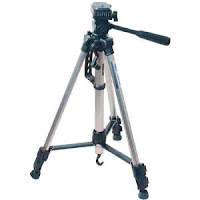 Whilst using a camera, to get a steady shot a tripod is needed. Using these tripods was awkward in times, for example we had to put one on a chair in order to get the right height and angle and it fell off a few times. Before this I had only ever used a tripod once and that was for taking pictures with an ordinary photo camera so it was static. When we were using it for our filming however, I learnt how to manipulate it in order to get it to do what we wanted and also I learnt how not to break it because being able to know how to work a tripod properly is one of the key skills I have learnt during this whole process.
Whilst using a camera, to get a steady shot a tripod is needed. Using these tripods was awkward in times, for example we had to put one on a chair in order to get the right height and angle and it fell off a few times. Before this I had only ever used a tripod once and that was for taking pictures with an ordinary photo camera so it was static. When we were using it for our filming however, I learnt how to manipulate it in order to get it to do what we wanted and also I learnt how not to break it because being able to know how to work a tripod properly is one of the key skills I have learnt during this whole process. But with all positives comes a negative and with our filming, there comes a few. One of these negatives is that we actually filmed over some flashback and stalking footage which was extremely irritating because we had literally just finished filming a couple of days before. This caused our whole group anguish and slight panic and this prevented our creative flow because in the watch flashback which we filmed over, there was a clock on the wall of the office which said 10.30 which was supposedly half an hour before our main character was murdered. Unfortunately we forgot about this clock feature and just wanted to get it over and done with because we had already spent so much time filming and our teacher was fed up of being filmed. Also, we filmed over the main ‘dead’ scenes when our character is lying on the floor so we re-filmed these but forgot to put the clock in saying 11 o’clock. This took away some of the significance of the clock but this was entirely our fault as we were dreading filming again and we just wanted to be able to edit. This has made me learn to check before each time we film that the tape is fast forwarded on so that it doesn’t record over anything and especially so that it doesn’t record over someone else’s work.
But with all positives comes a negative and with our filming, there comes a few. One of these negatives is that we actually filmed over some flashback and stalking footage which was extremely irritating because we had literally just finished filming a couple of days before. This caused our whole group anguish and slight panic and this prevented our creative flow because in the watch flashback which we filmed over, there was a clock on the wall of the office which said 10.30 which was supposedly half an hour before our main character was murdered. Unfortunately we forgot about this clock feature and just wanted to get it over and done with because we had already spent so much time filming and our teacher was fed up of being filmed. Also, we filmed over the main ‘dead’ scenes when our character is lying on the floor so we re-filmed these but forgot to put the clock in saying 11 o’clock. This took away some of the significance of the clock but this was entirely our fault as we were dreading filming again and we just wanted to be able to edit. This has made me learn to check before each time we film that the tape is fast forwarded on so that it doesn’t record over anything and especially so that it doesn’t record over someone else’s work.Blogger is an internet blogging site that allows individuals to have a personal blog for free. It enables them to write about whatever they want and for exam boards to check the process of coursework.
I had never used Blogger before this coursework and I found it easy to use. It allowed me to upload pictures, videos and links to anything that I had used or needed. I would definitely use Blogger again and it is so easy to use that I don't see why anyone wouldn't use it.
Q5. How did you attract/address your audience?
To attract our audience we used mystery and confusion. We did this by using a voice over on a black screen as the very first thing the audience are shown, so that they would be more focused on what was being said. This draws importance because as there are no interesting visuals then all the concentration will be on the sound which is what we wanted in order to draw the audience in and to keep their attention.
Another way we did this was by using the out of focus eye shot after the voice over and at the end. This was done at the beginning in order to make the audience purposely confused as to what is happening. We wanted them to question what they were seeing so that they would want to watch more and find out why this is happening. In all thrillers there is the element of confusion, as to who is the killer and why did they strike? This confusion also creates suspense and we used this generic thriller feature to keep our audience attracted to our opening sequence.
Audience research is another thing we did to address our audience. We made a questionnaire on some generic elements of thrillers and gave it to a group of wide age ranges. We then took these back and analysed the results as to if we should change anything. For example we asked if they preferred to have a male or female killer and 60% said they preferred a female antagonist. We also asked what gender they preferred the victim to be, man or woman and 80% said they preferred the man to be the protagonist. Looking at these results we obviously decided to keep the genders in the same suppressor/victim situation in order to keep our audience happy and interested in our film.
If the audience weren't happy with our film then this causes failure to us as a film team because the audience are extremely important to any film. We as a film production team need to recognise the importance of the audience because if there's no audience then there's no profit, and this can result in possible bankruptcy to the production and distribution company because the audience's cinema fees go towards the overall costs of the film. When making a film you want to override the costs of the production of the film so by attracting an audience and keeping them interested, the companies involved in producing and distributing the film will generate a profit.
To make sure a sample audience enjoyed this film we did a screening of our opening sequence and gave them a feedback sheet because this would be the first time we would get feedback from an audience other than ourselves. The audience was a total of six people which is small but we realise that if we were making this into a proper film then our sample audience for a preview screening would have to be a lot bigger in order to generate a statistical feedback result.
We asked this select audience if they noticed any continuity errors and they all said no which was amazing because with any film there can't be any continuity errors because then it would be disrupted and create less realism for the audience.
Another question we asked was if there was anything they would change or improve and the results were that nobody would make any changes or improvements! This is obviously brilliant because it proves that we took on board what our audience research results were and that the audience was pleased with it.
If the audience weren't happy with our film then this causes failure to us as a film team because the audience are extremely important to any film. We as a film production team need to recognise the importance of the audience because if there's no audience then there's no profit, and this can result in possible bankruptcy to the production and distribution company because the audience's cinema fees go towards the overall costs of the film. When making a film you want to override the costs of the production of the film so by attracting an audience and keeping them interested, the companies involved in producing and distributing the film will generate a profit.
To make sure a sample audience enjoyed this film we did a screening of our opening sequence and gave them a feedback sheet because this would be the first time we would get feedback from an audience other than ourselves. The audience was a total of six people which is small but we realise that if we were making this into a proper film then our sample audience for a preview screening would have to be a lot bigger in order to generate a statistical feedback result.
We asked this select audience if they noticed any continuity errors and they all said no which was amazing because with any film there can't be any continuity errors because then it would be disrupted and create less realism for the audience.
Another question we asked was if there was anything they would change or improve and the results were that nobody would make any changes or improvements! This is obviously brilliant because it proves that we took on board what our audience research results were and that the audience was pleased with it.
Q4. Who would be the audience for your media product?
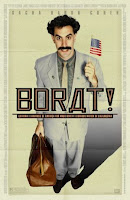 The British Board of Film Classification (BBFC) has helped us choose what certificate to make our film. As a group we decided on a fifteen rating as if we had made it an eighteen certificate, then we would have lost out on large range of audience seeing as if it was an eighteen then people of fifteen wouldn’t be able to see it and that would mean our film could lose out on an exceed able amount of profit. This happened with Bruno (Larry Charles, 2009) when it was first released into the cinema. It was originally rated as an eighteen certificate but the film company realised they would lose out on a considerable amount of audience as Borat (Larry Charles, 2006) was such a hit with this age group. In the end some footage deemed unsuitable for a fifteen certificate was cut out and thus it became a fifteen rating.
The British Board of Film Classification (BBFC) has helped us choose what certificate to make our film. As a group we decided on a fifteen rating as if we had made it an eighteen certificate, then we would have lost out on large range of audience seeing as if it was an eighteen then people of fifteen wouldn’t be able to see it and that would mean our film could lose out on an exceed able amount of profit. This happened with Bruno (Larry Charles, 2009) when it was first released into the cinema. It was originally rated as an eighteen certificate but the film company realised they would lose out on a considerable amount of audience as Borat (Larry Charles, 2006) was such a hit with this age group. In the end some footage deemed unsuitable for a fifteen certificate was cut out and thus it became a fifteen rating. The fifteen rating was also decided because of the boundaries; for example we didn’t want our film too violent and although there is a murder, it is suggested violence and the pain isn’t focused on which is what the BBFC states is allowed in a fifteen rating. I feel that the only pain that is shown is the main character’s pain of his loss of life. We also feel that there wouldn’t be much sexual references or a wide range of strong language, but there might be the occasional outburst from the character and this also relates to a fifteen.
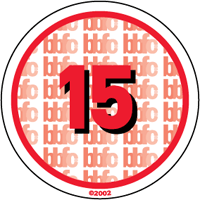 In our audience research we asked ‘what age do you think most watches thrillers’ with the choices of under 20, 21-34 or 35+. We asked twenty candidates and the most popular answer was 21-34 year olds. We didn't ask what gender they thought most watched thrillers but we have obviously learnt this for next time so we can either prove or contradict the stereotype that only middle aged males watch thrillers.
In our audience research we asked ‘what age do you think most watches thrillers’ with the choices of under 20, 21-34 or 35+. We asked twenty candidates and the most popular answer was 21-34 year olds. We didn't ask what gender they thought most watched thrillers but we have obviously learnt this for next time so we can either prove or contradict the stereotype that only middle aged males watch thrillers.Although we have decided that our film is a fifteen certificate, originally we rated it as a twelve. After talking to both our media teachers about it and re watching our sequence, we collectively decided it should be rated as a fifteen because our teachers pointed out that there was an underlying malicious tone to it that suggests more mature themes in it. This was annoying to some members of our group because some of us had already written this question but with a twelve certificate in mind. This meant that we had to re write what we had already written but luckily it was easily changeable because a twelve and fifteen rating are similar in some aspects of the boundaries.
Q3. What kind of media institute might distribute your media product and why?
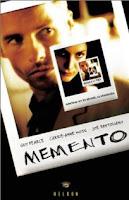
 I think this because it’s not an original idea; a victim being killed at the start of the film and the audience trying to piece together the crime and suspects. We also decided this because we think that the stereotypical audience for arthouse cinemas doesn't match our film because arthouse films can be niche and can only appeal to a select few. With our film we want it to apply to a wide range of audience so the niche category isn't what our film slots into. So with our film being mainstream, it would be distributed to mainstream cinemas like Showcase, Cineworld and The Odeon which attract millions of customers every year.
I think this because it’s not an original idea; a victim being killed at the start of the film and the audience trying to piece together the crime and suspects. We also decided this because we think that the stereotypical audience for arthouse cinemas doesn't match our film because arthouse films can be niche and can only appeal to a select few. With our film we want it to apply to a wide range of audience so the niche category isn't what our film slots into. So with our film being mainstream, it would be distributed to mainstream cinemas like Showcase, Cineworld and The Odeon which attract millions of customers every year.The budget that my group and I have decided for this film is £6.5 million. We decided this by comparing our film to similar ones like Memento (Christopher Nolan, 2000). Memento's budget was $5 million and we thought £10 million was a bit too high for our film and we couldn't decide on either £5 million or £7 million so we met near the middle and said £6.5 million.
 I think our film would be best suited as being distributed by a film company such as Newmarket Capital Group that is a production and distribution film company and when this occurs, this is known as digital convergence. Newmarket Capital Group is actually Memento's distribution and production comapny and we felt that we should use this because Memento started out as an independent (indie) film and went on to become a successful blockbuster.
I think our film would be best suited as being distributed by a film company such as Newmarket Capital Group that is a production and distribution film company and when this occurs, this is known as digital convergence. Newmarket Capital Group is actually Memento's distribution and production comapny and we felt that we should use this because Memento started out as an independent (indie) film and went on to become a successful blockbuster. We feel that our film would be opened on 150 to 200 screens in the USA to start with before marketing it to other countries such as the UK. It's important to market it to one country before marketing it to another because marketing is so crucial to a film that you want to have experience and feedback before this is done.
Q2. How does your media product represent particular social groups?
Our media product represents a post modern view of gender, for example our genre is thriller and our murder victim is male and our killer is female. This represents the idea of women being equal to or more powerful than men as they are now the killer, not the victim unlike fifty years ago which is conveyed in Psycho (Alfred Hitchcock, 1960).
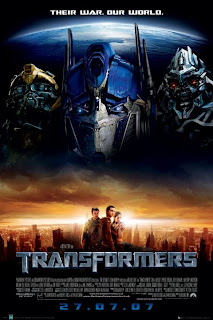 The man is represented as being powerless to the woman perhaps as they feel to their female partners in modern day relationships, which subverts the stereotypes of the typical man woman relationship. One of the messages being put across in our opening sequence is that woman are just as powerful as men and that they too can cause havoc and that they are not just the damsels in distress, they are the offenders and can create as much mess as a stereotypical male hero does.
The man is represented as being powerless to the woman perhaps as they feel to their female partners in modern day relationships, which subverts the stereotypes of the typical man woman relationship. One of the messages being put across in our opening sequence is that woman are just as powerful as men and that they too can cause havoc and that they are not just the damsels in distress, they are the offenders and can create as much mess as a stereotypical male hero does.If women aren’t the victim in films then they generally are there for their sex appeal, for example in Transformers (Michael Bay, 2007) Megan Fox is purely there for her sex appeal and her good looks. We didn’t want a ditzy female character that would just go with whatever the male hero said, we wanted a female with character and feistiness. However, the film noir genre has been an influence to us because although the women do seduce other man into doing the dirty work for them, they are still powerful and in control which is what we wanted for our main female character.
We wanted a strong female character that would kill our male character but I don’t think we wanted a trained assassin like in Nikita (Luc Besson, 1990) or Salt (Phillip Noyce, 2010).
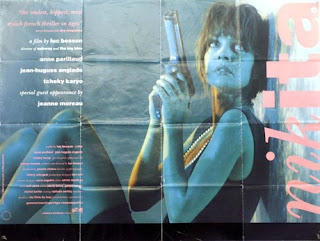

I feel that what we were going for is someone like Roxie Hart in Chicago (Rob Marshall, 2002). For example she killed her lover in the heat of an argument and although she used a generic weapon (a gun), we feel that this links to our storyline.
Male victims are slightly unusual too, due to the fact that even after the feminism revolution in the seventies men are still stereotypically seen as being in more power. This is the stereotypical ideology in Hollywood and is usually shown in big blockbuster films. Male victims are unconventional just like female agressors like in the film noir genre. What I mean by this is that they are the victim to the woman's sex appeal and are therefore powerless to the woman as she is manipulating them to do the things she doesn't want to.
Subscribe to:
Comments (Atom)








